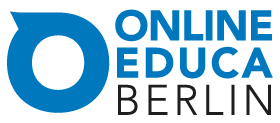Yesterday, I listed some of the major changes that L&D needs to acknowledge. What we need now is to look at the top steps that need to be taken. As serious practitioners in a potentially valuable field, we need to adapt to the changing environment as much as we need to assist our charges to do so. So what’s involved?
We need to get a grasp on technology affordances. We don’t need to that the latest technology exists, whether AI, AR, or VR. Instead, we have to understand what they mean in the context of our brains. What key capabilities are brought? Can VR go beyond entertainment to help us learn better? How can AI partner with us? If we can make practical use of AR, what would we do with it?
In conjunction, we need to understand the realities about us. We need to take ownership and have a suitable background in how people really think, work, and learn. Further, we need to recognize that they’re all tied together, not separate things. So, for instance, we learn as we work, we think as we learn, etc.
For example, we need to understand situated and distributed cognition. That is, we need to grasp that we’re not formal logical thinkers, but instead very context dependent, and that our thinking is across our tools. As a consequence, we need to design solutions that recognize our individual situations, and leverage technology as an augment. So we want to design human/computer system solutions to problems, not just human or system solutions.
We also need to understand cultural elements. We work better when we are given meaningful work, freedom to pursue those goals, and get the necessary support to succeed. This is not micromanagement, but instead, is leadership and coaching. We also need an environment where it’s safe, expected even, to experiment and even to make mistakes.
We also need to understand that we work better (read: produce better results), when we work together in particular ways. Where we understand that we should allow individual thought first, but then pool those ideas. And we need to show our work and the underlying thinking. Moreover, again, it has to be safe to do so!
And, these are all tied together into a systemic approach! It can’t be piecemeal, because working together and out loud can’t be divorced from the technology used to enable these capabilities. And giving people meaningful work and not letting them work together, or vice-versa, just won’t achieve the necessary critical mass.
Finally, we also need to do this in alignment with the business. And, lets be clear, in ways that can be measured! We need to be understanding what are the critical performance needs of the organization, and demonstrate that we’re impacting them in the ways above.
This can be done, and it will be the hallmark of successful organization. We’re already seeing a wide variety of converging evidence that these changes lead to success. The question is, are you going to lead your organization forward into the future, or keep your head down and do what you’ve always done?


 The other thing that I was involved in at Online Educa in Berlin was a session on The Flexible Worker. Three of us presented, each addressing one particular topic. One presentation was on collaborating to produce an elearning course on sleeping better, with the presenter’s firm demonstrating expertise in elearning, while the other firm had the subject matter expertise on sleep health. A second presentation was on providing tools to trainers to devolve content development locally, addressing a problem with centrally-developed content. My presentation was on the gaps between what L&D does and how our brains work, and the implications. And, per our design, issues emerged.
The other thing that I was involved in at Online Educa in Berlin was a session on The Flexible Worker. Three of us presented, each addressing one particular topic. One presentation was on collaborating to produce an elearning course on sleeping better, with the presenter’s firm demonstrating expertise in elearning, while the other firm had the subject matter expertise on sleep health. A second presentation was on providing tools to trainers to devolve content development locally, addressing a problem with centrally-developed content. My presentation was on the gaps between what L&D does and how our brains work, and the implications. And, per our design, issues emerged.